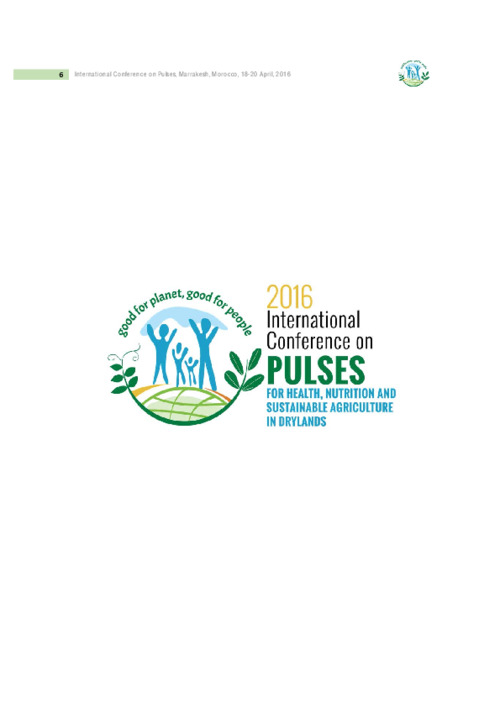Opportunities and limitations of multidimensional crop improvement in grain legumes to support increased productivity in mixed crop livestock systems
Abstract
While rising demand for animal sourced food (ASF) in emerging and developing countries increases feed demand, shrinking natural resource base particularly arable land and water limit feed production. Consequently crop residues as feed have become important and their monetary values relative to grains are increasing, and, in case of leguminous haulms, sometime exceeds that of the grain. Crop improvement and livestock nutrition have taken note of these emerging trends and collaboratively explored opportunities and limitations for improving crop residue quantity and quality through multidimensional crop improvement. This keynote presents findings on crop species and crop cultivar variations in grain and haulm yield, haulm fodder quality and possible trade-offs between traits in groundnut, cowpea, chickpea, lentil, and faba bean. With regard to fodder quality, groundnut and cowpea haulm rank highest, followed by lentil, chickpea and faba bean. We reports on cultivar variations that already exist which can be exploited by phenotyping for fodder quality traits during crop improvement and new cultivar release procedures as well as on further genetic enhancement towards dual-purpose traits. It also highlights trait relationships across the crops that can inform and guide further crop improvement. Significant cultivar variations have been observed for protein, neutral (NDF) and acid (ADF) detergent fiber, acid (ADL) detergent lignin, in vitro organic matter digestibility (IVOMD) and metabolizable energy (ME). Protein, IVOMD, and ME are positive fodder quality traits while NDF, ADF and ADL are negative ones. Trade- offs between haulm traits and grain traits were either absent or manageable. Our results suggest that grain yields are insufficient predictors of haulm yields and the latter should be recorded in contemporary legume improvement. Haulm protein content tended to be inversely related to grain yield but the trade- offs were moderate and many cultivars deviated from overall relationships. In all legume haulms investigated, cultivar-dependent protein contents ranges were proportionally far larger than ranges in IVOMD, ME, NDF, ADF and ADL. These findings are very relevant where legume haulms serve as supplement to lower quality cereal straws and stover. Haulm IVOMD, ME, NDF, ADF and ADL were mostly unrelated to grain yields. Except for haulms protein, positive haulm fodder quality traits were positively associated with haulm yield in groundnut, cowpea, chickpea and lentils. High heritability (h2) for haulm fodder quality traits indicate for future improvement toward dual purpose traits for groundnut and cowpea. Water stress generally enforced trade relationships – positive as well as negative ones. However, water stress affected grain and haulm yields much stronger than haulm composition. The laboratory results on nutritional quality were further validated through fodder market surveys and livestock productivity trials. In sheep fed exclusively on groundnut and cowpea haulms, weight gains varied –cultivar dependent - by more than 100% (65-136 g/day). In fodder marketing, cowpea and groundnut haulm fetched prices close to that of concentrate feeds. Indeed legumes haulms can provide feed resources of very high quality that often out-perform alternative rations believed to be superior like planted forages. Clearly the choice of legume cultivars with superior feed traits will have immense implication for the overall productivity of mixed crop livestock systems. There exists anecdotal evidence that cultivars superior in grain yield and haulm yield and haulm fodder quality create higher farmer demand and have higher adoption rates than cultivars improved solely for grain yield

